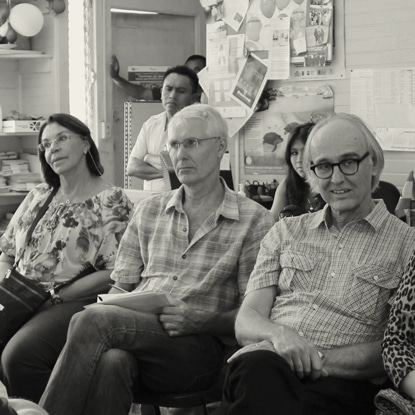It seems that in Canada, public meetings about harm reduction bring out the best and worst in people. This was certainly the case on Wednesday at a public meeting to discuss the inclusion of improved services in a local health unit on the edge of Victoria’s Fernwood neighbourhood.
This location is already the site of Victoria’s Sobering Centre and its Medical Detox facility. The meeting was held at the initiation of the Vancouver Island Health Authority (VIHA) to discuss their plan to create two service hubs in Victoria for harm reduction services. As you may recall, Victoria was forced to close its only fixed site needle exchange in 2008 after controversy erupted over public congregation outside its doors. Since then, attempts to move this site to other locations have been met with vociferous public opposition despite an intentional shift away from having just one location to having over 20 options for accessing needles and supplies.
Going in to the meeting, no one was happy. Clearly some thought the proposed services were too little and some though they were too much. Supporters of people who use drugs wondered about the inclusion of peers in the development and implementation of these services. But some area residents seemed palpably angry about VIHA’s new plan. The Health Authority took pains to argue that their latest proposal only adds new professional services to two locations already providing harm reduction supplies. But no matter how much reassurance representatives gave, some residents still angrily denounced the service.
Their language was pointed and painfully discriminatory – “those people”, “them” – meaning people who use drugs. Some neighbours worried about the safety of their children and some were afraid that violence, property theft and damage would escalate in their community. Even a Victoria Police’s Staff Sergeant Dave Bown challenged these speakers to rethink that one. These same neighbours were angry with VIHA for communicating their plans in the media despite an agreement to consult with neighbours.
These days, community input into health care can be an afterthought and even VIHA representatives admitted last night that that they could have done a better job of getting feedback on the plans from residents. So the neighbours are probably angry for a reason. But still, the opposition to harm reduction reminded me that it’s easy to pit children’s safety against the needs of a scary “other”. It’s much harder to get down to work on making the community safe for all, including people who use drugs.
These kinds of public meetings are taking place all over Canada as residents oppose proposed harm reduction or methadone services in their neighbourhoods. And media coverage often goes hand-in-hand with these events – conveying partial truths and giving angry voices the opportunity to parade out the worst of discriminatory attitudes toward people who use drugs.
At the same time, I was heartened by some of last night’s speakers who invited their neighbours to help clean up used needles and offered examples of successful programs to educate children about harm reduction. Some neighbours repeatedly spoke about their fear of discarded needles until one resident of Fernwood, Andrea Langlois, stood up and reminded everyone that no one had ever contracted HIV from being poked by a inappropriately discarded syringe off the street. That turned the tide and other neighbours stepped forward to praise the plan and welcome the services. A couple of speakers even wondered if public use of drugs could be addressed with supervised consumption services. These weren’t people used to speaking the language of harm reduction but they seemed to get it – that the public safety and health of the whole community is enhanced by a full range of harm reduction services.
One of the final speakers from the audience capped off the evening with a request that many of us could heed – stop sowing the seeds of fear and get to work on meeting the needs of all our citizens.








 At a recent meeting of the
At a recent meeting of the 
